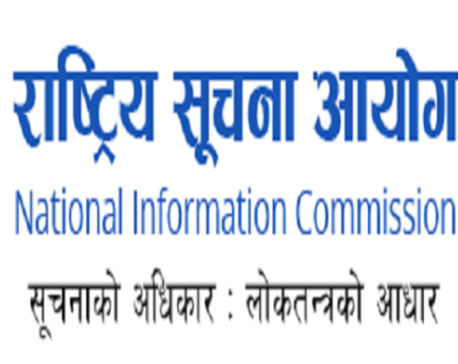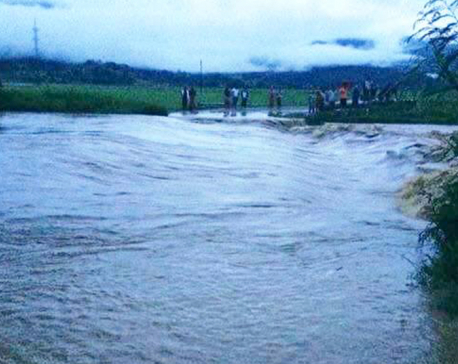
OR
Experts warn of 'river disasters' caused by development activities
Published On: July 9, 2018 02:30 AM NPT By: Republica | @RepublicaNepal
KATHMANDU, July 9: Experts have warned that several development activities have brought about disasters in the river basins, raising serious environmental concerns. Presenting a paper at a function organized on Sunday by Nepal Forum of Environmental Journalists (NEFEJ), Prof Subodh Sharma of Kathmandu University said that 19 "pressures/stressors" in Setigandaki have been identified along the river stretches.
"They have been categorized into five broad groups: Solid wastes (relative importance(RI): 31.3%), hydromorphological degradation, ecological disturbances (RI: 26.1%), and sanitation activity (RI: 21.6%), effluents (RI: 16.4%) and activities and facilities (RI: 5.2%)," he said. "The activities have threatened the environment, impacting seriously."According to Sharma's report, the urban coverage of the Seti watershed has increased by 60 percent from 24.03 km² in 1990 to 54.20 km² in 2013.
As per the analysis, 29.19 km² of cultivated land has been converted into built-up area. Easy road access to local villages has also fostered the urban growth. Not surprisingly, the area of cultivable land is declining. One result of the rapid movement of people to city areas is that forest coverage for private forest and community forestry has increased remarkably in the rural area.
The population in Pokhara grew from 156,312 in 2001 to 414,141 in 2011. The average minimum flow recorded in the river was 13 m³/s in April 2001 and maximum flow was 543 m³/s in August 2001. The Seti river basin has a total length of 112.6 km and a catchment area of 600 sq km.Ramesh Bhushal, expert and general secretary of NEFEJ, also presented a paper on River Basins: On the Cusp of Development and Disasters. "Gandaki river basin –will be most impacted as the major north south corridors-- Kerung in Rasuwa and Korala in Mustang-- are on the basin," he said.
"There are connectivity corridors along the river that are already under pressure."According to Bhushal, Nepal has 58,000 kilometers of roads. Of that, 3.5 percent roads are black-topped, 22.25 percent graveled, and 74.25 percent earthen. "When railways — 1,204 Kilometres East–West railways, 113 link railways, Kathmandu Kerung railways will be completed, the impact on water resources and environment will be very frustrating if it is not addressed on time," he said. "On the other hand, roadways, waterways, irrigation ways, pipe-ways, railways--all ways are on the card and some are on the ground already.
"The construction of hydro projects, too, is a threat to the river environment, said Bhushal. "Development works will cause hazards in the high mountains, pollution in the rivers, air and lead to solid waste, and deforestation," he added, "So, the media should play a vital role as a real watchdog."
You May Like This

Right to information a tool to make public institutions transparent, accountable
KATHMANDU, May 28: Experts working in the field of right to information (RTI) have argued that the right to information... Read More...

Town hall by ex-Malaysian leader Mahathir marred by violence
KUALA LUMPUR, August 14: A town hall meeting with former Malaysian Prime Minister Mahathir Mohamad, who now heads an opposition coalition,... Read More...

4 passengers swept away by river
PALPA, July 10: Four people on board a jeep have gone missing after the jeep with registration number Lu 1 Ja... Read More...
Just In
- KMC to organize a month-long skill fair from May 1
- Birgunj Metropolis collects over Rs 360 million in revenue
- NEPSE plunges below 2,000 points after one and a half months; daily turnover declines to Rs 2.10 billion
- AI Index Report-2024: AI still behind humans on complex tasks like competition-level mathematics
- Daiji-Jogbudha road construction at snail’s pace
- Govt fails to adopt podway technology despite its potential in Nepal
- Jhulaghat border crossing in Baitadi to remain closed from this evening
- Universities will be free from partisan interests: Education Minister


















Leave A Comment